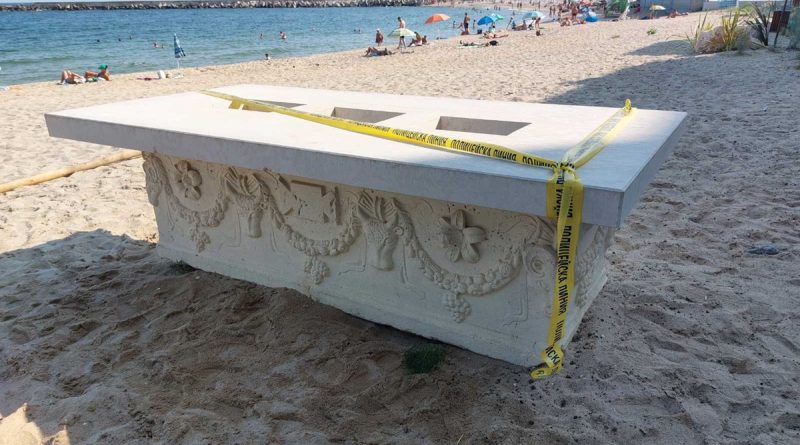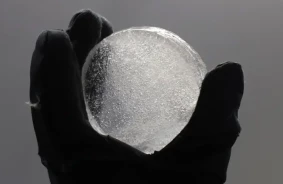The sarcophagus is estimated to be around 1,700 years old; however, this did not deter the owner of a beach bar in Bulgaria from using the ancient Roman tomb as a table.
The abandoned sarcophagus was spotted by a former police officer who was relaxing on one of the beaches in northwestern Bulgaria. He immediately reported it to the local authorities, and later representatives from the regional historical museum in Varna and the Cultural Heritage Protection Office arrived at the site.


After a thorough investigation, experts confirmed that the object found on the shore is indeed a valuable Roman artifact, dating back 1,700 years. Subsequently, Bulgarian journalists traced the “movements” of the sarcophagus and discovered that it had been used as a table in a local beach bar as far back as 2020.
The photos show people sitting around the sarcophagus, adorned with flowers, with a bar in the background. It remains unclear how the artifact ended up there and why it was later abandoned right in the sand — the owner declined to comment.


The sarcophagus has now been transported to the Varna Archaeological Museum using heavy machinery and assistance from the fire department.
“We want to see what is underneath it, whether any of the original paint remains, and what techniques were used in its creation—any information that will prove it is an authentic sarcophagus,” — said museum expert Milen Marinov in comments to journalists.
After the paint was removed from the façade, archaeologists discovered shell limestone as well as patterns resembling garlands — a common motif in ancient Roman funerary art.
At the same time, the design does not conform to the aesthetics of other Roman artifacts found in Varna, suggesting it likely originated from another region of Bulgaria. Varna was originally a Thracian settlement, later becoming an ancient Greek colony, and became part of the Roman Empire in 15 AD.
“The police, and possibly the prosecution, should investigate how this sarcophagus ended up in Varna and on the beach,” said the head of the research team, Alexander Minchev.
Source: Interesting Engineering














Comments (0)
There are no comments for now